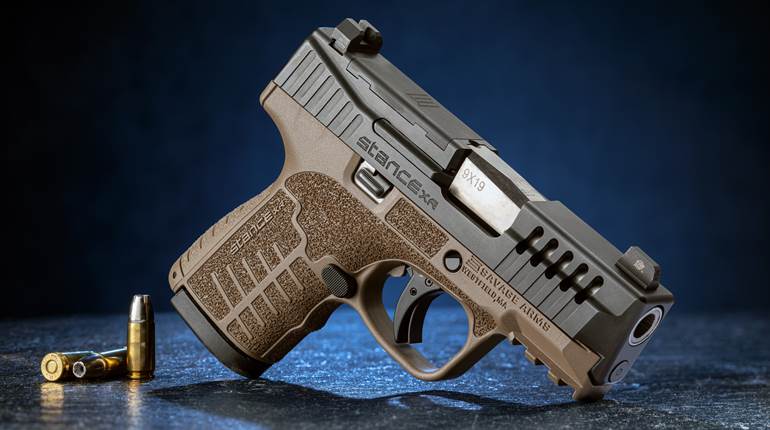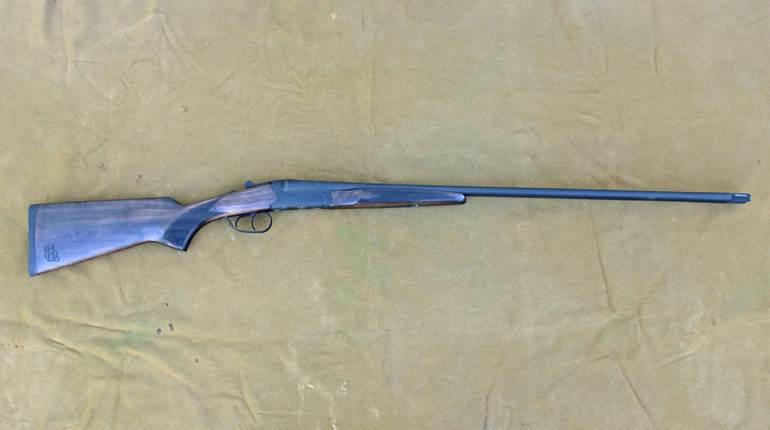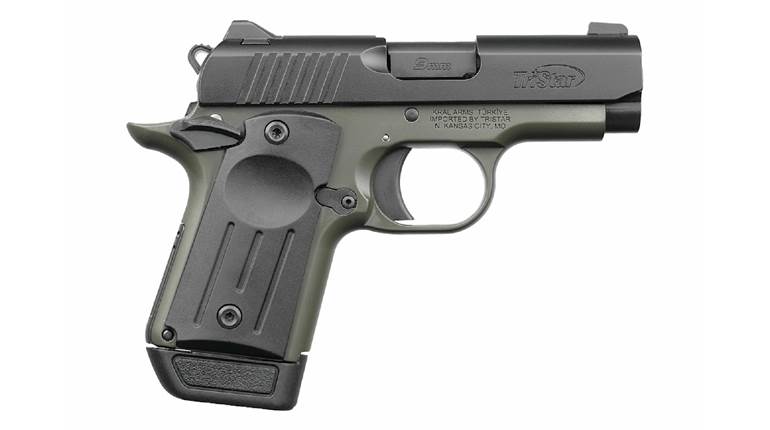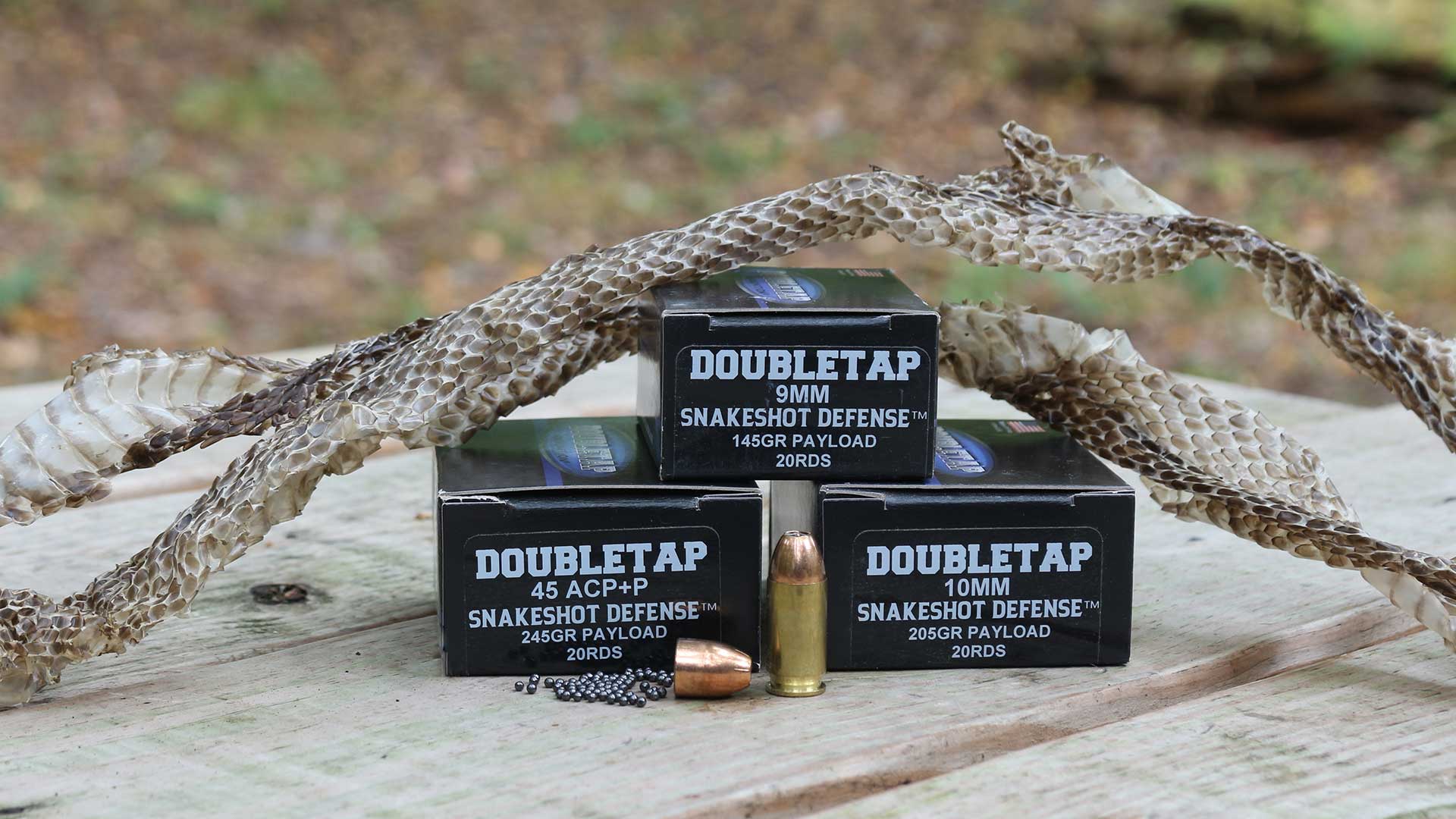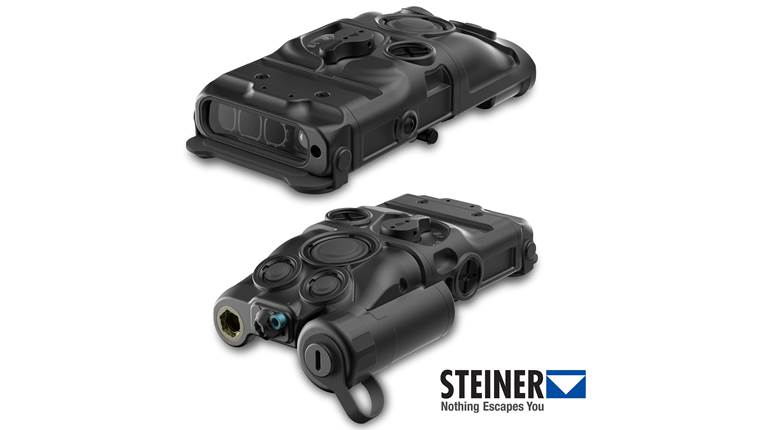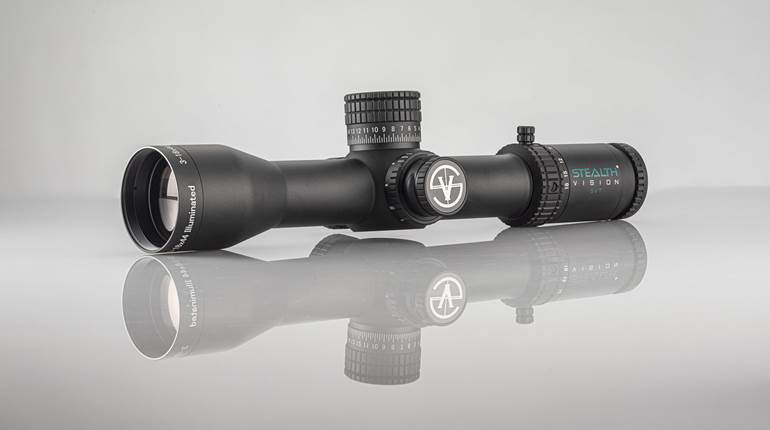
On Dec. 27, 2023, Austrian engineer and businessman Gaston Glock passed away at the age of 94. Although he was an experienced manufacturer, he had no training as a firearm designer when he decided to develop a semi-automatic pistol in the early 1980s. The goal was to make a gun that could successfully compete as a replacement for the Austrian armed forces’ World War II-era Walther P38 sidearm. He gathered a team of European experts drawn from civilian shooting sports and military and law-enforcement backgrounds to ascertain the most advantageous features for a combat pistol.
Glock did not come to the table empty-handed. His extensive background in advanced synthetic materials led to his invention of Polymer 2, a high-strength, nylon-based material that proved to be more resilient than many steel alloys. Using polymer to form the pistols’ frame and various components made the guns lighter, more weather-resistant and less costly to manufacture. Glock would also introduce the gun-manufacturing industry to ferritic nitrocarburizing as a corrosion-resistant treatment for metallic gun components that it refers to as Tenifer.
Along with what would become the first commercially successful polymer pistol frame, the Glock design incorporated the Safe Action striker-fired ignition system. In place of a traditional frame- or slide-mounted thumb lever, the external safety is a thin blade set within the trigger itself. This integral blade safety works in conjunction with internal firing-pin and drop safeties to prevent the partially cocked striker from releasing unless the trigger is fully depressed.
The initial pistols that would become the Standard-size Glock 17, chambered in 9 mm Luger, were ready for testing early in 1982. Several G17 pistols were submitted for the military’s rigorous tests and trials; the Glock emerged the winner due to its superior performance, handling characteristics, ammunition capacity and more affordable cost to produce. It was adopted by the Austrians and designated the P80. Word of Glock’s durable, reliable polymer pistol quickly spread across Europe and eventually to the United States.
In 1988, the same year that the G17 was adopted as a NATO-standard sidearm, Glock introduced the Gen2 series. It would include one of the company’s all-time best sellers, the Compact-size G19 chambered in 9 mm, along with models chambered in .40 S&W, 10 mm Auto and .45 ACP. By 1996, the Gen3 series was ready to launch. Among these options were the first double-stack Subcompact models, or “Baby Glocks,” which were the smallest models to date. Over the next few years, customers would see the introduction of the Gen3 Short-Frame (SF) models, with grips that are more compact, front to-back, along with early versions of the Rough Texture Frame (RTF) grip texturing. In 2000, the first Slimline single-stack frame was released in the form of the G36 chambered in .45 ACP.
The Gen4 models were announced in 2010 with two of the most notable changes being the standardization of the RTF3 rough texturing for the grip and the use of more robust dual-spring recoil assemblies in all three frame sizes instead of just the Subcompacts. In 2014, Glock finally conceded to customer requests for pocket-size pistols. The long-awaited Subcompact-size, single-stack Slimline frame lineup was expanded to include the U.S.-made G42 in .380 ACP followed by the popular G43 in 9 mm released in 2015. This was the same year that marked the arrival of models outfitted with the Glock Modular Optic System (MOS)—slides cut to allow the mounting of micro red-dot optics.

The Gen5 series launched in 2017 with more than 20 modifications according to company literature. Some were brand-new additions while others were reversions to preferred features from previous generations, and a few changes are essentially the migration of features introduced with the G42 and G43 pistols. It’s worth noting that with the launch of the Gen5 options the Gen3 and Gen4 lines remained in production. The Gen3 options most likely continue in the catalog due to the popularity of the expansive selection of compatible aftermarket parts. Meanwhile, the Gen4 guns are likely filling the product gaps as various models transition to the Gen5 feature set.
Among the latest additions to the Gen5 lineup are the Standard-size G20 chambered in 10 mm Auto, which launched in 2023, and the double-stack G30 Subcompact in .45 ACP that is a new-for-2024 addition. Both of these models piqued my interest. But before we delve into the range results, let’s take a look at how this series’ models have changed, and yet, in some ways, remained the same.
Like previous generations, the Glock Gen5 models are short-recoil-operated, locked-breech, semi-automatic pistols chambered for centerfire pistol cartridges. The one notable exception to the rule being the model G44. Released in 2019, this was the first Glock chambered for the rimfire .22 Long Rifle cartridge.
Glock slides have previously been treated with Tenifer finishes. The Gen5 slides instead ship with a deep black nDLC, a diamond-like carbon treatment, which is among the latest options for weather-proofing and protecting the steel from scratches and wear. The slide markings, including the model, chambering and serial number, were formerly stamped into the slide, which gave them a subtle raised surface you could feel by running your finger across the letters and numbers. Now they are engraved into the steel in such a way as to leave the surfaces of the metal smooth.

The factory-installed sight system consists of the familiar polymer white-dot post sight up front and the dovetailed, square-notch sight at the rear; however, the rear sight’s white outline has been thinned a bit and the notch slightly enlarged for an improved sight picture. Available with or without the MOS system, the slides feature front and rear vertical cocking serrations.
The nose of the slide is beveled with the flush-fit front end of the dustcover shaped to match. Although this rounding does little to alleviate the Glock’s signature blocky profile, it does contribute to smoother reholstering. The recoil assembly support loop, just below the muzzle port, is thicker than those of past models for added strength. The ejection port and the extractor, with its visible and tactile loaded-chamber indicator extension, are unchanged. The polymer slide cover plate’s two ports have been modified to accommodate the two square protrusions that are now found at the rear of the frame.
Inside the slide, the once-rounded firing pin safety plunger has been exchanged for a G43-style plunger with a distinctive wedge-like shape. Conversely, the strikers now have a rounded firing pin shape instead of the wedge-like shape of previous versions. This and other dimensional changes to the strikers make them incompatible with Gen4 pistols.
The Gen5 models ship with Glock Marksman Barrels. They are easy to visually identify due to the muzzles’ target-style recessed crown, which is absent from previous barrel configurations. These barrels are said to have modified lugs, tighter chambers and improved polygonal rifling, although the exact nature of the changes to the rifling are not clearly defined. The dual recoil assemblies look much like those of the Gen4 guns but appear to about 0.25" longer. This, in turn, requires the slide lock to be moved back along the frame the same distance.
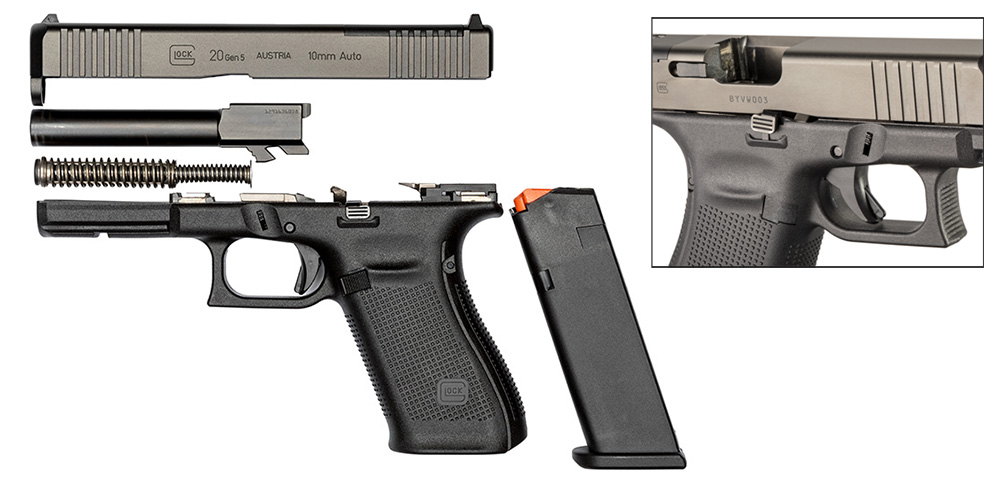
The polymer frames sport just two support pins including those for the trigger and trigger housing; the third locking-block pin has been omitted. Dustcovers still house silver serial-number plates along with molded-in accessory rails that have a single Picatinny-compatible slot. A set of digital calipers confirmed that the slots of the accessory rails for the Gen3 and Gen4 frames I had on hand measured 0.15" while those of the two Gen5 frames were 0.20". This slight widening allows for a broader variety of light and laser modules to be mounted to these pistols.
With the slides removed, more G43-influenced changes are readily apparent. The slide lock is supported by a coil spring instead of a flat spring. The looped end of the trigger return spring has been replaced with a four-piece trigger spring assembly and a trigger bar modified to match.
Among the most notable changes unique to the Gen5 models are the bilateral slide stop levers. This somewhat V-shaped, one-piece lever is shaped from thicker metal, powered by a coil spring, and the right- and left-side tabs protrude a bit more from the sides of the frame. The leading point of the lever brackets the slightly narrowed pivot point of the trigger shoe. This neatly solves the problem of added space for the lever without deducting material from the frame. It also means the trigger shoe is shifting back and forth against steel on both sides instead of the polymer of the frame.
The trigger guard, with its curved and textured finger rest along the front edge, is lifted straight from the Gen4 playbook along with the curvature of the polymer trigger shoe, the rectangular reversible magazine-release button and the rough grip texturing on all sides. Some say the undercut and beveling where the guard connects with the grip frame are different, but it looks and feels similar to that of the larger Gen4 frames to me. The manufacturer’s mark was formerly located at the top of the right side of the grip. It’s now found in the same box as the patent-pending information near the opening of the pistol’s magazine well.

The other frame change folks will notice right off the bat is the flat profile of the grip’s frontstrap. Although the Gen3 and 4 finger grooves were not a concern for many fans of the platform, the return of the Gen1- and Gen2-type straight profile is a decided improvement for a variety of hand shapes. The grip frame is grooved to accommodate the medium and large interchangeable backstraps provided with the gun. The magazine well is externally flared and internally beveled along the front and both sides for speedier reloading. The G30, however, has an uncommon extended magazine baseplate with the front edge flared and beveled while the sides remain flattened.

The factory magazines for Gen5 pistols continue to be metal-lined with polymer shells. However, the metal liner is completely enclosed with polymer around the magazine-release cutout. The previously black polymer followers have been replaced with bright orange units; this color change makes it easier to verify the magazine is completely unloaded and to see the follower as it moves past the numbered ports along the magazine’s spine. In most cases, the baseplates have been tapered along the front edge and the sides have been slightly enlarged to match the shape of the flared magazine well so that they can still be manually stripped from the grip if necessary. A total of three magazines and a magazine loader are standard equipment that ship with this pistol series.
Glock’s 10 mm pistols are a longtime favorite of mine, so I was perfectly happy to have an opportunity to work with the Standard-size Gen5 G20. The pistol was outfitted with the MOS-compatible Swampfox Kraken enclosed-emitter 3-m.o.a. red-dot optic for formal accuracy testing at 25 yards. The grip shape and texturing were a pleasure to work with as this particular pistol fed, fired and ejected all loads of ammunition tested without any malfunction using the three magazines provided in the box.
As for the Subcompact G30, I walked away from the Gen3 version years ago because it was a poor fit for my somewhat smaller hands. I purchased the slimmer G36 instead. For this reason, I was curious to see if two generations of grip modifications would make a difference. Not only did the G30 prove to be a good fit, but it was fun to shoot! Tested at 15 yards using the factory polymer sights, it was more of a handful than some guns in this size class but certainly not punishing to fire. This pistol was also utterly reliable and malfunction-free throughout the entire course of informal and formal testing.
As of this writing, Glock pistols have been in circulation for slightly more than four decades, and I’ve been shooting various examples of these polymer-frame, striker-fired pistols for about 25 of those years. It began with finding my way to the popular Gen3 models in the late 1990s and continued from there. At this point in time, I’ve had opportunities to work the triggers of pistols representative of all the generations and even took a Glock armorer’s certification course. That day-long class taught me that you don’t need an armorer’s course to fix or modify these semi-automatics. Their simple and modular design allows for a variety of uncomplicated at-home, table-top component exchanges using just a pin punch and perhaps a pair of thin-profile needle-nose pliers if you need to get to the Gen4 or earlier magazine-release button’s spring.

With the first Gen5 models shipping for a few years now, and more models still being added, two things have become clear about what to expect from future additions. First, this company is willing to make some changes to its iconic design. I found good reasons to like both of the Gen5 models evaluated for this review. The grips are a good fit for my hands and the bilateral slide release is a welcome, if not overdue, improvement. Secondly, Glock is likely to continue clinging doggedly to keeping its pistols’ profile fundamentally the same.
Pick a dozen different models from across the five generations, set them all side by side and unsurprisingly they all look like Glocks. Some shooting-sports enthusiasts chafe at this lack of cosmetic diversity. But why fix something that isn’t broken? It was built from the ground up as a tool with a utilitarian design, not as a highly polished show piece. Factory-produced Glocks are unlikely to ever be “handsome” handguns. These pistols would not be among the most popular in the world if they didn’t work and work well. Thus, if you are in the market for a reliable pistol that keeps on punching the clock, year after year, then take the advice of U.S. Marshal Samuel Gerard, played by actor Tommy Lee Jones in the movie “The Fugitive” (1993), and “Get yourself a Glock.”














